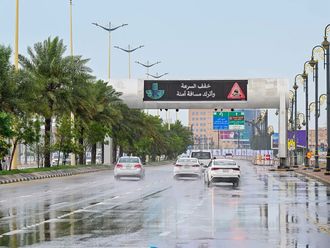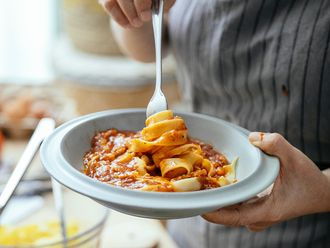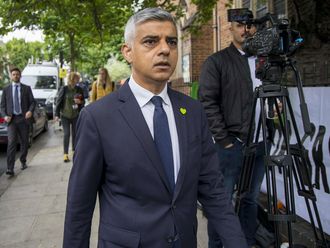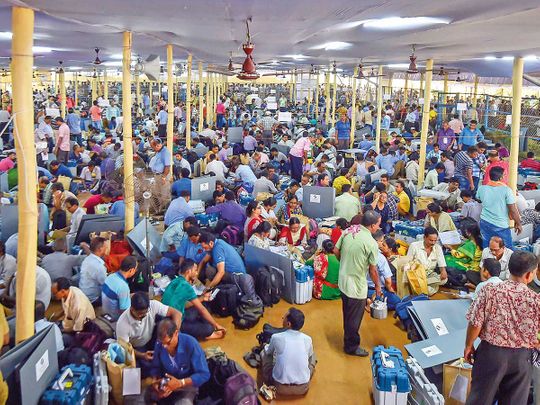
VARANASI: India’s marathon general election is nearing the finish line. On Sunday, the final phase will take place, with voting to be held for the remaining 59 seats in the 543-member Lower House of parliament.
Vote counting is scheduled to start on Thursday. India has 900 million eligible voters.
The election has taken place in a charged atmosphere as Prime Minister Narendra Modi’s Bharatiya Janata Party (BJP) seeks a second term by pushing policies that some say have increased religious tensions and undermined multiculturalism. The campaigning has been marred by accusations and insults, as well as the unprecedented use of social media.
13
seats in Uttar Pradesh, the largest state, go to the polls todayThe election is seen as a referendum on Modi and the BJP. Modi promised big-ticket economic reforms, but with unemployment rising and farmers’ distress aggravated by low crop prices, his party has adopted a nationalist pitch in trying to win votes from the country’s majority Hindus.
Polling will be held in all 13 seats in Punjab and an equal number of seats in Uttar Pradesh (UP), nine in West Bengal, eight seats each in Bihar and Madhya Pradesh, four in Himachal Pradesh, three in Jharkhand and the lone seat Chandigarh.
More than 100 million voters are expected to decide the fate of 918 candidates. The Election Commission has set up more than 112,000 polling stations for smooth conduct of polls.
Our aim is to oust the Bharatiya Janata Party (BJP) and for the entire opposition to be united.
In UP, all eyes will be on Varanasi, where besides Modi, 25 other candidates are in the fray. Modi’s main challengers are Congress’s Ajay Rai and Shalini Yadav of the Samajwadi Party (SP)-Bahujan Samaj Party (BSP) grand alliance.
The BJP is contesting 11 Lok Sabha seats in UP in this phase, while its ally Apna Dal (Sonelal) is contesting Mirzapur, currently held by Union minister Anupriya Patel, and Robertsganj.
Siromani Akali Dal (SAD) chief Sukhbir Singh Badal and Union ministers Harsimrat Kaur Badal and Hardeep Singh Puri are among the 278 candidates, including 24 women, whose fate will be decided in Punjab on Sunday.
An electorate of 14,963,064 will decide the fate of 111 candidates in nine seats of West Bengal — Kolkata North and Kolkata South, Dum Dum, Barasat, Basirhat, Jadavpur, Diamond Harbour, Jaynagar and Mathurapur — the last two being reserved seats for Scheduled Caste candidates.
1.79 m
total number of voters in the Varanasi constituencyEight seats, barring Jadavpur, will witness a contest among the Trinamool Congress (TMC), BJP, Congress and the Left Front. Congress has given the Jadavpur seat a miss.
If UP were a country, it would be one of the world’s most populous. And this melting pot of more than 200 million people is the biggest prize in India’s election ending on Sunday.
UP has a total of 80 parliamentary seats, the most of any state. In the 2014 election, Prime Minister Narendra Modi’s Hindu nationalist BJP had swept the state with 71 seats. This helped give BJP a three-decade record of 282 seats in the 543-seat parliament to oust India’s grand old Congress party, which sunk to a record low of 44 — just two of those seats coming from UP.
“To be in Delhi, you need to perform very well in UP,” Ashok Upadhyay, political scientist at Banaras Hindu University, told AFP.
Many analysts credit the BJP’s previous electoral success to a fragmented opposition and a massive shift of disparate caste groups towards Modi over an array of issues, including emotive religious appeals. UP, which has given India nine prime ministers so far, lies at the centre of the country’s vast northern Hindi-speaking belt, home to around a third of India’s 1.3-billion population and which in 2014 formed the core of the BJP’s support.
Dalit voting power
But the landlocked region, home to the Taj Mahal and roughly the size of Britain, is also a cauldron of religions and castes and in this election an unlikely anti-Modi alliance has been formed. One part of it is the BSP, headed by Mayawati, the formidable “Dalit (lower caste) Queen” whose championing of India’s lower castes helped her become UP chief minister four times. This time, she has partnered with her former sworn foes, the SP, led by another former chief minister, Akhilesh Yadav, and the smaller Rashtriya Lok Dal (RLD). Absent from the tie-up though is Congress.
“Our aim is to oust the BJP and for the entire opposition to be united,” Vandana Singh, spokeswoman for SP, told AFP.
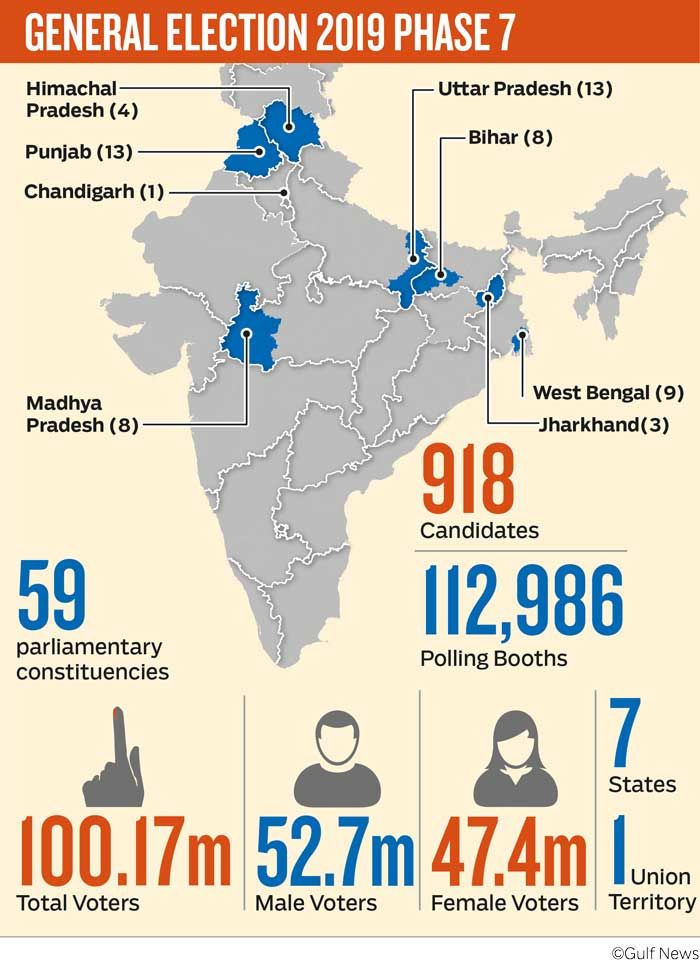
The state’s chief minister is currently the BJP’s hardline Yogi Adityanath, a saffron-robed Hindu monk whose uncompromising communal rhetoric has alienated many voters.
The BJP insists it is confident, but experts say the ruling party knows it is going to lose support in UP.
As a result, the party is aiming to make up for losses by picking up seats in north-eastern and eastern India, most notably in West Bengal where it faces another tough challenger in the hard-left Mamata Banerjee, the TMC chief and chief minister.
“Getting a majority (in parliament) means a comprehensive electoral performance across the country,” Nalin Kohli, a BJP spokesman, told AFP.


